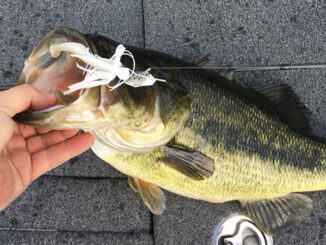
While many kayak anglers across the country have put their ‘yaks away for winter, here in Louisiana we are fortunate to still be able to kayak fish on most days. No frozen lakes here and no closed seasons. However, we must face the truth that kayaks are not the greatest option to ply the waters during this time of year. Sure, you can catch fish, but at what cost?
Kayaks offer little to no protection from the elements. Nothing to break the cold wind or hide from the rain. No matter how careful you are, you will get water on you, be it wet feet launching, drips from paddling or spray from waves. Of course, capsizing or otherwise falling into the water at this time of year can be a nightmare. Without proper precautions, these conditions can, at best, cause discomfort and at worst, possibly even death. We fish to have fun, not to be miserable.
Cold and wet is not a good combination. Hypothermia is a real threat when kayak fishing in the winter. Next to a quality PFD, the single biggest precaution you can take is to make sure your clothing, from head to toe, is wind and waterproof. Of course, wearing super bulky clothing in a kayak can cause its own issues with comfort and mobility. Casting, paddling/pedaling and landing fish will all be impaired if you’re bundled up like the Michelin Man.
However, most high-tech outdoor clothing has thin insulation and water and wind proof membranes that keep the elements out, while still allowing the fabric to breathe. Additionally, outer coatings of a DWR (Durable Water Repellant) finish also keeps the exterior from getting saturated. This clothing has much less bulk and works well for the active nature of kayak fishing.
Head, neck, feet
A suitable jacket and pants cover most of your body, but key places like the head, neck, hands and feet cannot be overlooked. The head and neck areas account for a large portion of lost body heat. A quality hat, hood, facemask, and/or a neck gaiter can keep the heat contained. Waterproof gloves keep your fingers from going numb. Get a quality pair that are not too bulky and can easily be removed when more dexterity is needed. Look for a pair that has small slits that allow access to bare fingertips when needed.
Quality footwear is probably the biggest challenge. Warm, waterproof boots are often too bulky, especially if you are pedaling. Then, there is the issue of them filling with water in the event you go overboard. One work around is quality, warm socks such as wool or Alpaca topped with a pair or waterproof socks. This way, you can wear a lighter pair of shoes or boots and still keep your feet warm and dry. Cold feet make for an absolutely miserable trip with not much you can do to warm them after the fact. One tip is to place a pair of those disposable hand warmers inside your footwear. As long as they stay dry, they give off enough heat to improve circulation and keep your feet warm for a few hours.

Hope for the best, but prepare for the worst.
Pick days where the weather pattern is stable. There’s nothing like being out in a kayak and having a cold front blow through. The conditions can turn dangerous in a matter of minutes. There really is no sense in heading out when you know the conditions are going to be bad. While you should carry some type of emergency bag year-round, this is even more important in the winter months.
Absolute necessity
An emergency kit for winter should include a change of clothes and a towel. These should be stored in a quality dry bag to ensure they are dry when you need them. As to other necessities, these items should be included at a minimum: Signal mirror and whistle; Space Blanket; fire starter (waterproof matches, disposable butane lighter, etc.); first aid kit; compact air horn; jerky/protein bar; flashlight; VHF radio; disposable rain poncho. You can add and subtract items as your personal needs dictate. Hopefully you will never, ever need it. But if you do, it better be close by.
Besides being in a tested waterproof dry bag, they should be regularly inspected. I keep my kit stored in a large vacuum sealed bag. It can safely be stored within the hull and prevents mold and moisture. The clear bag also makes for ease of seeing the contents without opening the bag. Keep it with you. In an dire emergency, it won’t do you any good in the truck.
Other general precautions for winter fishing include keeping gear to a minimum. Low water conditions can cause the need to get through inches of water or even mud. A heavily laden kayak makes this chore much more difficult. They are also more difficult to paddle or pedal, especially against strong winds. Always fish with a friend or at least leave a float plan with someone that knows the area you will be in.
This time of year, there is no necessity or sense in being on the water before dawn or after dark. Let the sun come up and do what it does. A few degrees rise in the water and air temperature can make all the difference in the world for your comfort and fish activity. Mid-morning through mid-afternoon are generally the best times to be on the water during the winter.
Kayak fishing in the winter can be fun and rewarding, but common sense must be applied. If you have doubts about going, follow your instincts and wait for better conditions. No fish is worth dying over.


